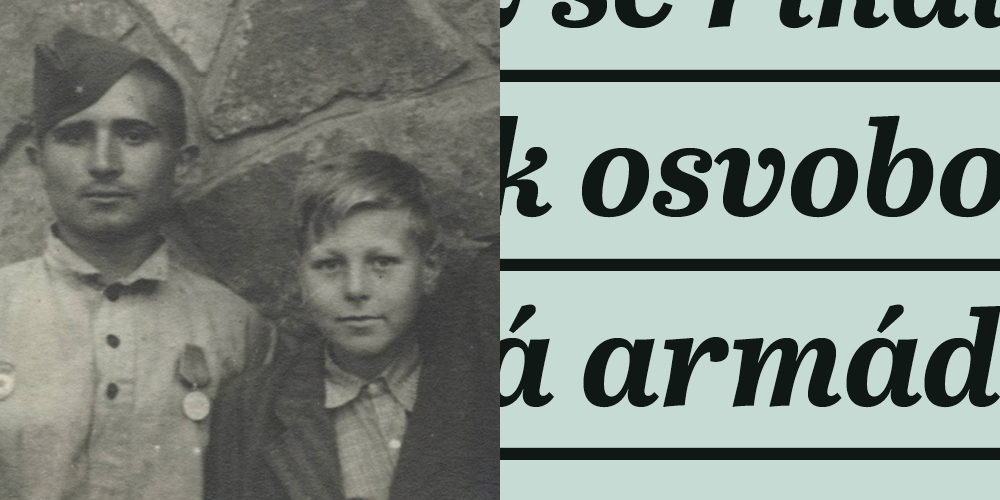
As a boy, Richard Praus experienced the liberation of Písek by the American army on 6 May 1945 and the arrival of Soviet soldiers four days later.
“Písek was behind the demarcation line, that is, in the sector liberated by the Red Army. However, its advance was slowed down in the Brno region, so the Soviets did not arrive in Písek until the afternoon of 10 May 1945,” he recalls.
“In front of the town hall, there was a ceremonious toast by officers of the American and Soviet armies, and after the demarcation line was clarified, the Americans cleared out of Písek,” adds Richard Praus, who would bring American and Soviet soldiers home for the night in those days. He recalls, for example, a sergeant named Moon who was absolutely delighted by the prospect of a hot bath.
After 1948, however, the Americans were to be forgotten and only the Soviet liberators were to be mentioned in connection with the end of the war. Richard Praus decided to correct the distorted image of liberation after the Velvet Revolution. He founded the Buddies of the 4th Armored Division. In his hometown of Písek, he pushed for the erection of a monument to the true liberators. “After fifty-five years, the injustice has finally been righted,” he said at the unveiling ceremony in 2000.
Liberation
Nazi Germany was defeated in the Second World War by the determination, bravery, and combat deployment of soldiers from the United States, Great Britain, Poland, France, the Soviet Union, and other countries and nations. But the Soviet Union, led by the dictator Stalin, did not join the Allies until it itself was attacked by the Nazis in June 1941. Until then, the USSR had acted as a partner of Nazi Germany in the spirit of the Molotov-Ribbentrop Pact concluded shortly before the outbreak of the war. At that time, when tens of thousands of Czechoslovaks fled from the Nazis to the USSR, they often ended up in gulag labor camps. The Red Army did not enter the war until the summer of 1941 after Nazi Germany had invaded.
The Soviet Union deployed over six million soldiers to the Eastern Front. We can speak of great heroism and huge losses. The Red Army, with great effort, defeated the better armed and trained German Wehrmacht, and with it the prestige of the “land of the Soviets” logically grew. However, when we talk about the liberation of Czechoslovakia, we must mention, besides the Soviet victims (up to 140,000 Red Army soldiers are said to have died), the tens of thousands of our soldiers fighting alongside the Allies on the Eastern and Western fronts, the brave Slovak insurgents, the paratroopers, partisans and thousands of their helpers, the insurgents from the barricades of Czech towns at the end of the war, and last but not least the soldiers of the American Army who liberated part of the Czechoslovak territory from the west, as well as the forgotten Romanian soldiers advancing with the Soviets from the east. On 8 May 1945, after six long years, peace reigned in Europe and Czechoslovakia became a liberated country. But not free.



